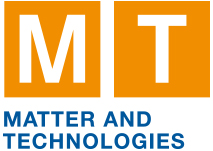Speaker
Description
Laser–plasma interactions (LPI) are at the center of key future technologies where the extreme electro-magnetic fields of high-power lasers accelerate particles at mm-length scales. These include inertial confinement fusion, where laser fields compress fusion fuel to extract energy. Furthermore, laser–particle acceleration (LPA), where, e.g., electrons can be accelerated to GeV energies in a lab instead of by a km-long linear accelerator, can drive compact secondary radiation sources for high-resolution imaging in materials science or precise high-dose irradiation in medicine. These non-linear acceleration processes are highly sensitive to initial conditions, hence our goal of controlling them poses three major challenges: (1) Direct observation of the microscopic dynamics is infeasible in experiments, (2) high-fidelity large-scale plasma simulations, required to understand the microscopic particle dynamics, are prohibitively expensive for large parameter scans and produce PBs of field and particle data, and (3) uncertainty about experimental input parameters and microscopic outputs block the alignment of simulation campaigns with experiments.
This presentation shows how we enlist generative AI including physics-informed training, large-scale coupled simulation and training workflows, and probabilistic modeling to bridge this divide between experiment and simulation to address these three challenges.

